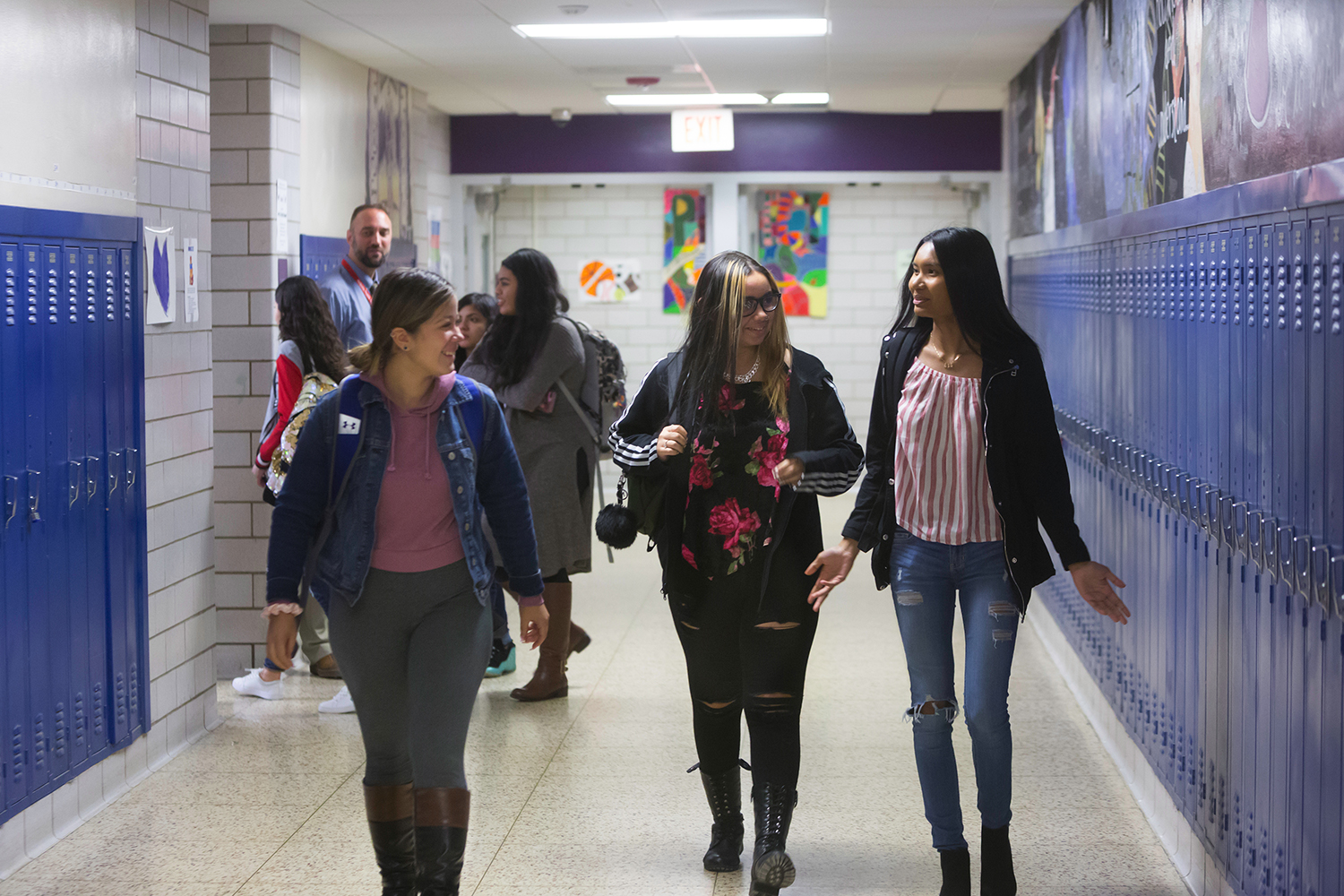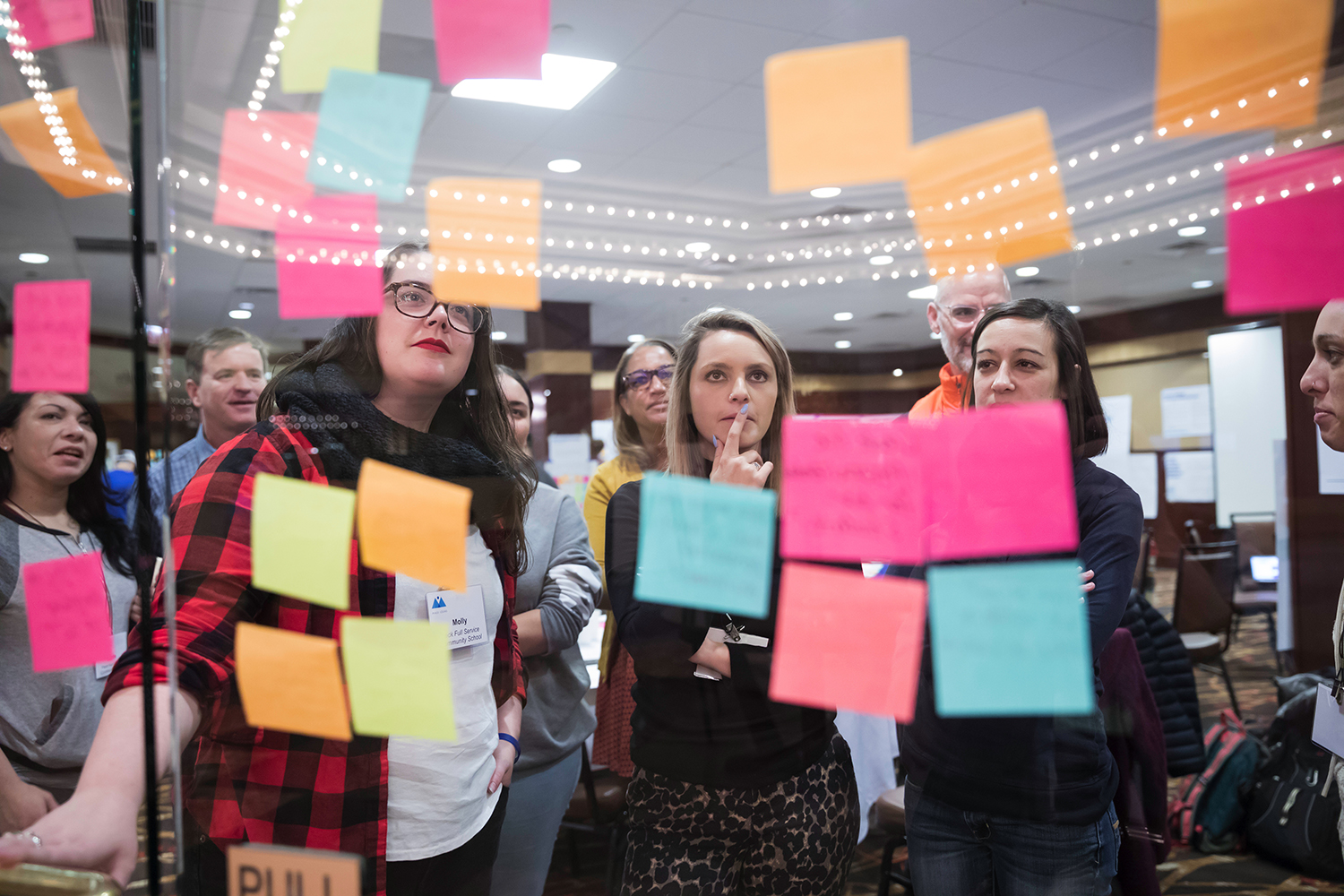The achievement gap is evident even by the time kids start Kindergarten. All the research shows that high quality early education programs can narrow that gap. Yet, until recently, Massachusetts lacked a consistent way for parents, providers, and policy makers to assess or improve quality. Thanks to a new statewide effort launched earlier this year, that is all on its way towards big, systemic change.
Earlier this year Dr. Sherri Killins Commissioner of the Massachusetts’ Department of Early Education and Care (EEC) launched the State’s Quality Rating and Improvement System (QRIS). In the midst of a challenging economy and widespread budget cuts Governor Patrick stood squarely behind the new effort. To better understand why this was such a priority and what QRIS may actually mean for young children and their families Stefan Lanfer, Barr’s Knowledge Officer, spoke with two Barr grantees who have trained their efforts on closing achievement and opportunity gaps for the State’s youngest citizens – Amy O’Leary Director of the Early Education for All Campaign and Mav Pardee Program Manager of the Children’s Investment Fund.
STEFAN: In plain English what exactly is QRIS?
AMY: All the research shows that quality makes a big difference in terms of outcomes for kids. QRIS is a way to define what quality actually means. It creates a way for programs to assess their current quality and to have a clear pathway to improve. It lets EEC know how best to target resources. Ultimately it makes it easy for parents to know what quality looks like and how different programs stack up. It’s like a five star rating for a restaurant or hotel.
MAV: That’s exactly right. I’d just add that QRIS is a big leap forward but by no means the first time quality has been a priority. EEC and those of us in the field have been working on it for a long time. That’s why Massachusetts already has more nationally accredited sites than anywhere in the country.
STEFAN: I’m glad you brought up accreditation. To improve access to high quality early education in Boston Barr spent a lot of years helping programs achieve and maintain accreditation. After all the time and money is QRIS now introducing a whole new set of requirements and a brand new starting line?
MAV: That’s a good question. It’s one that came up a lot during the two years that our QRIS was being developed. Keep in mind the organizations providing early education and care programs in Massachusetts are largely pretty lean. They don’t have big middle management layers. Usually it’s one person. It takes over a year for a program to earn accreditation. Then every couple years they need to get reaccredited. That’s why from the start it was so critical to align QRIS with accreditation – to make sure it all works together. People didn’t want to see that set aside or not incorporated.
AMY: Mav is right. But there is an important difference in Massachusetts which is that getting accredited isn’t a free pass on QRIS. In some states it is. There are about 23 states that have already implemented their own versions of QRIS. In a few of them accreditation bumps programs right to the highest level. In Massachusetts being accredited is one way for programs to demonstrate they’ve met critical quality benchmarks. But to get to the highest level (Level 4) we’ve got higher standards in some areas than to meet accreditation requirements – like educational attainment and experience for administrators and teachers or having a working sink in every classroom.
STEFAN: What difference will QRIS actually make for families and kids? I am a parent. I walk into a center. What do I notice?
MAV: Right now not a lot. We’re still early in the process. But over time you will see more highly qualified teachers better curriculum better physical environments. You will also see programs incorporating QRIS into their marketing – because being a QRIS Level 3 or 4 will send parents a strong signal. The savvier families will pick this up early. But we’ll do outreach to others too.
STEFAN: What does it say about QRIS that Governor Patrick got behind it even while making difficult cuts in so many other areas?
AMY: Obviously we’re thrilled it’s a priority for him. And it makes sense to be one now because this is about strengthening a system. It’s not about funding one more initiative and hoping for best. It’s a measurable way to talk about progress and where we want to be with respect to young children. It also positions Massachusetts to be competitive for federal money – especially the new Race to the Top Early Learning Challenge.
MAV: It also is perfectly consistent with the Governor’s focus on closing the achievement gap – and for all of us with our eyes on that goal. These days at all levels of the education system people are recognizing that what happens to kids in the first five years has enormous impacts. So investments there make a lot of sense – but only if we invest in quality.
STEFAN: What were some of the biggest challenges getting to this point?
AMY: Convincing practitioners this wasn’t just one more hoop but part of a system and then coming to consensus about what defines quality. From the beginning Commissioner Killins was committed to making sure QRIS was owned by those in the field – not just imposed from on high. There was a community group of 50-60 people working together on the standards. Getting to consensus was challenging but so worth it. Everyone had input.
STEFAN: What do you see as the next big challenge for the field and as QRIS goes to scale?
MAV: We are going to have to figure out how to come up with funding to help programs meet these new standards which is a tall order in an under-resourced field. Part of this will be taking a hard look at rate structure – especially in programs serving kids on federal subsidy. Subsidy rates are set every two years based on a national market rate survey of cost of care. Subsidies are set at 75% with parents expected to come up with 25%. But in Massachusetts where costs are higher than anywhere else in the country the subsidy ends up being closer to 50% of costs. That means programs are losing money on every child on a subsidy. And most programs I work with – including many in Boston – have over 80% of kids on subsidy. This is a big challenge.Another big one is financing for facilities. We just did a facilities inventory across the State. We found that most programs don’t even have a line item in their budgets for repairs or replacements. So if furnace breaks they’re in financial crisis. We have to get much more creative about financing for facilities and equipment.
STEFAN: Anything to add Amy?
AMY: Data and alignment. We’ve got to be sure we’re measuring the right things so that what we do pre-Kindergarten contributes to the critical outcomes – like third grade literacy.
STEFAN: Well said. Thank you both for your time. Really. And for all you are doing for kids.
AMY: My pleasure.
MAV: Mine too.



